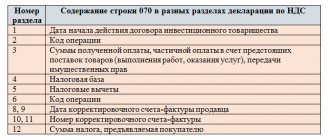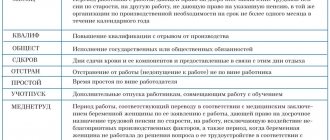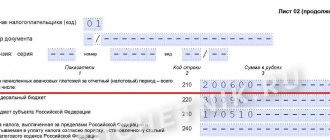Why report excise taxes?
Excise taxes were developed as a taxation tool. All producers of consumer goods are required to pay this internal indirect tax. The calculated excise tax is included in the final cost of the product. Excise goods include:
- alcohol;
- tobacco products;
- petrol;
- some imported goods.
Manufacturers are required not only to calculate and pay the excise tax, but also to report on the state of mutual settlements with the budget. Tax reporting on excise duties is submitted to the Federal Tax Inspectorate at the place of registration of the manufacturer. If excisable goods are produced and sold by an individual entrepreneur, he must submit the register to the Federal Tax Service at his place of residence.
The excise declaration is submitted monthly, but only in case of sale of manufactured products. If an enterprise manufactured but did not sell an excisable product, there is no need to submit a report.
What types of declarations are there?
Excise tax is not a single form of reporting. Various forms are used to provide information about different types of reporting products. In 2020, tax forms and rules for filling them out have been updated. Here are the types of excise tax declarations submitted to the Federal Tax Service in 2020:
| Name | Order | KND form number | When is the form submitted? | Download |
| Tax return on excise taxes on tobacco products | Order of the Federal Tax Service of Russia dated 02/15/2018 No. ММВ-7-3/ [email protected] (Appendix 1 to the Order) | 1151074 | From August 2021 | |
| Declaration on indirect taxes when importing goods from the territory of the EAEU countries | Order of the Ministry of Finance of Russia dated September 27, 2017 No. SA-7-3/ [email protected] | 1151088 | From December 2021 | |
| Declaration of excise taxes on fuel | Order of the Federal Tax Service of Russia dated January 12, 2016 No. ММВ-7-3/ [email protected] (Appendix No. 4 to the Order) | 1151089 | From August 2021 | |
| Declaration of excise taxes on alcohol | Order of the Federal Tax Service of Russia dated September 21, 2018 No. ММВ-7-3/ [email protected] (Appendix No. 1 to the Order) | 1151090 | From March 2021 (from March report) |
How many types of excise tax returns exist currently?
The “excise” declaration form does not have the property of universality, like most tax reports (for transport tax, VAT, property tax, etc.) - it is impossible, using the same form, to report on all excisable goods and transactions.
Find out the specifics of filling out various tax returns from the articles posted on our portal:
“What is the procedure for filling out a VAT return (example, instructions, rules)”;
“Sample for filling out a declaration under the simplified tax system in 2015–2016”.
Currently, “excise” declarations are presented in 4 forms:
- on alcohol;
- for motor gasoline and other excisable goods (except for tobacco products);
- on tobacco products;
- for natural gas.
The forms and procedure for filling out the first 2 forms were approved recently (order of the Federal Tax Service of Russia dated January 12, 2016 No. ММВ-7-3 / [email protected] ), the “tobacco” declaration was approved much earlier (order of the Ministry of Finance of the Russian Federation dated November 14, 2006 No. 146n). The natural gas declaration is completed only by merchants who carry out transactions with natural gas produced before 01/01/2004 - its form and procedure for filling out are approved by order of the Ministry of Finance of the Russian Federation dated 03/03/2005 No. 32n.
You can learn the nuances of filling out individual “excise” declarations from the subsequent sections of our material.
Who delivers and when?
The reporting persons are those who file the excise tax return. These include organizations and individual entrepreneurs paying excise taxes (Article 179 of the Tax Code of the Russian Federation). Those enterprises that transport products across the borders of the EAEU must also report.
Reports are submitted to the Federal Tax Service inspection at the location. If there are separate divisions, reporting is sent to the Federal Tax Service at the location of this division. The deadline for submitting an excise tax return is limited; documents must be submitted by the 25th of the next month. But only those organizations that actually pay excise tax to the budget after selling excisable products report monthly.
The delivery format is paper (if the number of employees allows) and electronic (for those who employ more than 100 people). The indirect tax return must be submitted by the 20th of the following month.
Accrued excise taxes are paid on the same dates - no later than the 25th of the next month. The reporting person is advised to file the return and make payments at the same time to avoid warnings and subsequent penalties.
Who submits the declaration and when (and is it necessary to submit beer reports)?
The tax return on excise taxes on alcoholic beverages was approved by order of the Federal Tax Service of Russia dated January 12, 2016 No. ММВ-7-3/ [email protected]
The deadline for submitting the declaration is monthly until the 25th day of the month following the month in which transactions subject to excise duty were carried out (Clause 5 of Article 204 of the Tax Code of the Russian Federation). It is rented out by producers of alcohol, alcoholic and other alcohol-containing products, which are sold in Russia or exported abroad (Clause 1 of Article 182 of the Tax Code of the Russian Federation).
Beer is a type of alcoholic product, like other drinks with an alcohol content of more than 0.5% (clause 1.1 of the Procedure for filling out the declaration under Order No. ММВ-7-3/ [email protected] ). Therefore, brewing companies selling goods in Russia and abroad also submit the report under consideration.
Should EGAIS users submit an alcohol declaration? Let's consider what the answer to this question depends on.
How to fill out a declaration for alcohol
There is no uniform procedure for filling out the 2020 alcohol excise tax declaration; it all depends on the type of alcoholic product. There are general rules for filling out the title page and the summary section for excise taxes. All other sections are filled out solely according to the type of product being reported.
Let's give an example. “Ideal Producer” is a brewing company. She needs to submit an excise tax report on beer produced in June 2021. The deadline for submitting reports for June 2021 is 07/25/2019. The manager decided to report in advance.
Ideal Supplier produced and sold 200,000 cans in June 2021. The volume of each jar is 0.5 liters. The total volume produced is 100,000 liters (200,000 × 0.5). Ethyl alcohol content - 7%.
The excise tax rate for beer products with an alcohol content from 0.5% to 8.6% in 2021 is 21 rubles/liter.
The total amount of excise taxes payable to the budget: 100,000.00 × 21 = 2,100,000.00 rubles. Now you need to report the amount of excise taxes to the territorial Federal Tax Service. Here's how to correctly fill out the alcohol excise tax return for beer drinks:
- Start generating a report from the title page.
- Fill out all sections and applications that correspond to the actual data of the accountable person.
- Enter a separate indicator on a separate line. If an organization has several types of excise goods, then each is assigned a separate line. Excise products are not subject to summation.
- Number all pages in order.
- Avoid corrections. The Federal Tax Service will not accept forms crossed out or corrected with a special liquid.
Now let's move on to filling out sections of the alcohol declaration.
ORDER
completing and submitting the excise tax return
I. General provisions
1. The excise tax declaration was developed in accordance with paragraph 27.7 of Article 27, Article 28 and subparagraph 87.3.2 of paragraph 87.3 of Article 87 of the Law of the Donetsk People’s Republic “On the Tax System” dated December 25, 2015 No. 99-INS (hereinafter referred to as the Law).
2. The excise tax declaration is drawn up and submitted by the payer of the excise tax on excisable goods (products) produced in the customs territory of the Donetsk People's Republic, and by the importer of alcoholic beverages and tobacco products (hereinafter referred to as the payer).
3. The base tax period for paying excise tax corresponds to a calendar month.
4. The objects of excise taxation and the procedure for determining the tax base are established by Article 83 of Chapter 13 of the Law, the list of excisable goods (products) and the amount of excise tax rates is established by Article 84 of Chapter 13 of the Law.
II. Preparation of the Excise Tax Declaration
1. The excise tax declaration is drawn up by the payer in accordance with the requirements established by Article 28 of Chapter 8 of the Law. The appendices to the Excise Tax Declaration are an integral part of it.
2. The excise tax declaration consists of a general part containing the necessary mandatory details of the payer, and three sections, which are drawn up by payers depending on the type of excisable goods, calculation applications for calculating the amount of tax depending on the type of established excise tax rates, as well as the section that is filled out by employees of the bodies of the Ministry of Revenue and Duties of the Donetsk People's Republic (hereinafter referred to as the bodies of the Ministry of Revenue) after submitting the excise tax declaration. The procedure for filling out the excise tax declaration separately for each section is indicated in Section IV, and the annexes in Section V of this Procedure.
3. In the general part of the excise tax declaration, the payer indicates the type of declaration filed (reporting, new reporting, clarifying), the reporting (tax) period for which the declaration is submitted, or the reporting (tax) period that is being updated (in the case of submitting a clarifying declaration).
4. The excise tax declaration shall indicate the full name (last name, first name, patronymic) of the payer according to the registration documents, the OKPO identification code or the registration number of the tax payer’s registration card and the location (residence) of the payer.
5. The excise tax declaration contains the name of the Ministry of Revenue authority to which it is submitted, the date of submission, initials, surname, registration number of the tax payer’s registration card or the series and number of the passport (for individuals who, because of their religious beliefs, refuse to accept the registration number tax payer's registration card and notified the relevant state tax service authority about this and have a mark in the passport), and the signature of the payer - an individual or officials of the payer, certified by the payer's seal (if any).
6. The excise tax declaration is signed:
the head of the payer or an authorized person, as well as the person who is responsible for maintaining accounting records and submitting a tax return to the Ministry of Revenue;
an individual - the payer or his legal representative.
7. If necessary, the payer may submit, along with the excise tax declaration, additions drawn up in any form, which are considered an integral part of such a declaration. Such an addition is provided with an explanation of the reasons for its presentation.
III. Submission of excise tax declaration to the Ministry of Revenue authorities
1. The payer independently calculates the amount of the tax liability, which is noted in the excise tax declaration.
2. The excise tax declaration for the reporting period, which is equal to a calendar month, is submitted by the payer every month no later than the 20th day of the next reporting period to the Ministry of Revenue at the place of registration of the payer.
3. The payer is obliged to submit an excise tax return for each reporting (tax) period, regardless of whether such payer carried out business activities during this period.
4. The payer fills out the appropriate section and appendices to it of the excise tax declaration, which correspond to the type of economic activity of the payer and the type of excisable goods (products).
5. The excise tax declaration is submitted to the Ministry of Revenue in person by the payer or an authorized person, or sent by mail with acknowledgment of receipt and a list of the contents.
6. If the excise tax declaration is sent by mail, the payer is obliged to send it to the relevant authority of the Ministry of Revenue no later than ten days before the deadline for submitting the excise tax declaration.
7. When accepting an excise tax declaration, the authorized official of the Ministry of Revenue with which the payer is registered is obliged to check the presence and accuracy of filling in all the mandatory details of the payer provided for in paragraphs 28.2, 28.3 of Article 28 of Chapter 8 of the Law. Other indicators noted in the submitted declaration of the payer are not subject to verification before its acceptance.
8. The official of the Ministry of Revenue with which the payer is registered is obliged to register the submitted excise tax return on the date of its actual receipt, provided that the payer complies with the requirements of Article 29 of Chapter 8 of the Law.
9. The excise tax declaration provided by the payer is considered accepted subject to the conditions specified in Articles 28 and 29 of Chapter 8 of the Law. The refusal of an official of the Ministry of Revenue to accept an excise tax declaration for any reasons not specified in Article 29 of Chapter 8 of the Law is prohibited.
10. If a tax payer submits to the Ministry of Revenue an excise tax declaration filled out in violation of the requirements of clauses 28.2, 28.3 of Article 28 of Chapter 8 of the Law, such Ministry of Revenue body is obliged to provide such payer with a written notice of refusal to accept the excise tax declaration in accordance with clause 29.8 of the article 29 of the Law.
11. If the Ministry of Revenue authority refuses to accept an excise tax declaration, the payer has the right, in accordance with paragraph 29.9 of Article 29 of the Law, to submit a new Excise Tax Declaration and pay a fine if the deadline for its submission is violated or to appeal such actions of the Ministry of Revenue authority in the manner prescribed by Law.
12. Regardless of the refusal to accept an excise tax declaration, the payer is obliged to pay off the tax liability independently determined by him in such a declaration within the time limits established by the Law.
13. If the last day of the deadline for submitting an excise tax return falls on a weekend or holiday, then the last day of the deadline is considered to be the next working day.
14. The excise tax declaration shall indicate all the indicators provided for in the form, and if it is not completed due to its absence, a dash is placed.
15. Amendments to the Excise Tax Declaration are carried out in the manner prescribed by Article 31 of the Law.
16. The information reflected in the Excise Tax Declaration must be confirmed by primary documents and accounting data.
IV. Procedure for filling out an excise tax declaration
1. Except for the cases provided for by tax legislation, the taxpayer independently calculates the amount of the tax liability and/or penalties, which he notes in the excise tax declaration, which is submitted to the Ministry of Revenue within the time limits established by the Law. A tax liability independently determined by an excise tax payer is not subject to appeal.
2. The introductory part of the Excise Tax Declaration is completed in the manner specified in Section II “Drafting the Excise Tax Declaration” of this Procedure.
3. Section A “Tax obligations for ethyl alcohol and other alcohol distillates, alcoholic beverages and beer” of the excise tax declaration is filled out by payers for ethyl alcohol and other alcohol distillates, alcoholic beverages and beer in the following order:
3.1. The first column of lines A1 - A9 indicates the section codes and transactions with ethyl alcohol and other alcoholic distillates, alcoholic beverages and beer, the taxation of which is provided for in Chapter 13 of the Law.
3.2. The second column of lines A1 - A9 contains a list of transactions with ethyl alcohol and other alcoholic distillates, alcoholic beverages and beer, which are subject to excise taxation.
3.3. The third column of lines A1 - A9 indicates the amounts of excise tax calculated in accordance with Appendix 1 to the excise tax declaration, which are entered in accordance with the column numbers of the appendices.
The amounts of excise tax noted in the third column of lines A1 - A9 are calculated in the form according to Appendix 1, which is filled out and submitted indicating in the upper left corner of the appendix the transaction code and the period defined in the first column of section A.
3.4. Line A10 indicates the amount of reduction in tax liabilities for ethyl alcohol and other alcoholic distillates, alcoholic beverages and beer, the amount of which is calculated in the form according to Appendix 1:
3.4.1 reducing the amount of tax by the amount calculated from the returned ethyl alcohol and other alcoholic distillates, alcoholic beverages and beer to the taxpayer, which were previously sold or imported by the payer, as provided for in paragraphs 86.5 and 86.8 of Article 86 of Chapter 13 of the Law;
3.4.2 a reduction in the amount of tax in other cases provides for an adjustment of the tax liability by the amount of lost goods (products) for which a tax liability does not arise under the circumstances listed in paragraph 85.3 of Article 85 of Chapter 13 of the Law.
3.5. Line A11 indicates the amount of tax liabilities, which are determined as the sum of lines A1 – A9, minus line A10. In lines A11.1 - A 11.4, the amounts of tax liability are indicated in accordance with the budget classification codes separately for ethyl alcohol, alcoholic beverages, wine products, other alcoholic distillates and beer, based on calculations in the form of Appendix 1 for those transactions carried out by the payer.
4. Section B “Tax obligations on tobacco products, tobacco and industrial tobacco substitutes” is filled out by excise tax payers on tobacco products, tobacco and industrial tobacco substitutes in the following order:
4.1. The first column of lines B1 - B7 indicates the section codes and transactions with tobacco products, tobacco and industrial tobacco substitutes, the taxation of which is provided for in Chapter 13 of the Law.
4.2. The second column of lines B1 - B7 contains a list of transactions with tobacco products, tobacco and industrial tobacco substitutes, in which the payer has a tax obligation to pay excise tax.
4.3. The third column of lines B1 - B7 indicates the amount of excise tax on tobacco products, tobacco and industrial tobacco substitutes, calculated according to the form of Appendix 2 to the excise tax declaration.
The amounts of excise tax in the third column of lines B1 - B7 are calculated in accordance with Appendix 2, which is filled out and provided indicating in the upper left corner of the Appendix the transaction code and line defined in the first column of Section B.
4.4. Line B8 indicates the amount of reduction in tax liabilities, the amount of which is also calculated in the form of Appendix 2:
4.4.1 reduction of the amount of tax by the amount calculated from the returned tobacco products, tobacco and industrial tobacco substitutes to the taxpayer, which were previously sold or imported by the payer, as provided for in paragraphs 86.5 and 86.8 of Article 86 of Chapter 13 of the Law;
4.4.2 a reduction in the amount of tax in other cases provides for an adjustment of the tax liability by the amount of lost goods (products) for which a tax liability does not arise under the circumstances listed in paragraph 85.3 of Article 85 of Chapter 13 of the Law.
4.5. Line B9 indicates the total tax liability accrued on tobacco products, tobacco and industrial tobacco substitutes, which are determined as the sum of lines B1 - B7, minus line B8.
5. Section B “Tax obligations on petroleum products, liquefied gas” is filled out by excise tax payers on excisable petroleum products and liquefied gas in the following order:
5.1. In the first column of lines B1 - B5, the codes of the section and transactions with petroleum products and liquefied gas, the taxation of which is provided for in Chapter 13 of the Law, are noted.
5.2. The second column of lines B1 – B5 contains a list of transactions with petroleum products and liquefied gas, in which a tax obligation to pay excise tax arises.
5.3. The third column of lines B1 – B5 indicates the amount of excise tax on petroleum products and liquefied gas, calculated in the form of Appendix 3 to the excise tax declaration.
The amounts of excise tax in the third column of lines B1 - B5 are calculated in accordance with Appendix 3, which is filled out and provided indicating in the upper left corner of the Appendix the transaction code and line defined in the first column of Section B.
5.4. Line B6 indicates the amount of tax reduction, which is also calculated in the form according to Appendix 3:
5.4.1 reducing the amount of tax by the amount calculated on the returned petroleum products, liquefied gas to the taxpayer, which were previously sold or imported by the payer, as provided for in paragraphs 86.5 and 86.8 of Article 86 of Chapter 13 of the Law;
5.4.2 a reduction in the amount of tax in other cases provides for an adjustment of the tax liability by the amount of lost goods (products) for which a tax liability does not arise under the circumstances listed in paragraph 85.3 of Article 85 of Section 13 of the Law.
5.5. Line B7 contains the amount of benefits for transactions that are exempt from taxation according to the list of such transactions noted in paragraph 83.3 of Article 83 of Chapter 13 of the Law. This amount of excise tax is calculated in accordance with the form in accordance with Appendix 3 to the excise tax declaration.
5.6. Line B8 indicates the total tax liability accrued on petroleum products and liquefied gas, which are determined as the sum of lines B1 – B5, minus line B6. Including in lines B8.1 - B8.3 the amounts of tax liability are entered in accordance with the budget classification codes, calculated separately for motor gasoline and other petroleum products (light, medium and heavy distillates), liquefied gas.
V. Additions to the Excise Tax Declaration
1. Appendix 1 “Calculation of the amount of excise tax on ethyl alcohol and other alcohol distillates, alcoholic beverages and beer” is filled out in the following order:
1.1. Column 2 “Product (product) code according to the Customs Code of Foreign Economic Activity” indicates the code of alcoholic beverages for which the Law establishes excise tax rates.
1.2. Column 3 “Description of goods (products) in accordance with the Customs Code of Foreign Economic Activity” indicates the name of alcoholic beverages in accordance with the Customs Code of Foreign Economic Activity.
1.3. Column 4 “Alcohol content” indicates the alcohol content in a specific type of alcoholic beverage (40%, 30%, etc.).
1.4. Column 5 “Bottle volume” indicates the capacity of the bottle of alcoholic beverages in liters (0.5 l, 0.7 l, etc.).
1.5. Column 6 “Number of bottles” indicates the number of bottles for each name of alcoholic beverages (100, 500, etc.).
1.6. Column 7 “Taxable turnover, total” indicates the taxable turnover of alcoholic beverages in liters (column 5 x column 6).
1.7. Column 8 “Taxable turnover in terms of 100 percent alcohol” indicates the taxable turnover of alcoholic beverages, recalculated in 100 percent alcohol (column 4 x group 7: 100).
1.8. Column 9 “Excise tax rates for 1 liter of 100 percent alcohol” indicates the excise tax rate in rubles established by Article 84 of Chapter 13 of the Law.
1.9. Columns 10 – 14 determine the amount of tax liability payable:
Columns 10 – 13 of the application are filled out on the basis of the following documents, which are drawn up by the taxpayer:
calculating the amount of excise tax reduction by the amount of tax calculated on the basis of the actually lost amount of ethyl alcohol during transportation, storage and during the production of finished products, as well as from the actually returned irreparable defect;
Column 10 indicates the amount of excise tax, calculated based on the actual losses of alcohol during transportation, storage and during the production of finished products within the limits of the norms approved in the prescribed manner, by which the amount of the tax liability is reduced;
Column 11 shall indicate the amount of excise tax calculated in connection with changes in excise tax rates by which the amount of excise tax is reduced or increased;
column 12 indicates the amount of excise tax calculated on the volume of actually returned irreparable defects, by which the amount of excise tax is reduced;
Column 13 shall indicate the amount of tax determined as a result of other charges payable in the reporting month and not confirmed by preliminary payment;
in column 14 “The amount of the tax liability is subject to payment to the budget” indicates the amount of excise tax determined as a result (gr. 7 or gr. 8 * gr. 9 – gr. 10 (+ or -) gr. 11 – gr. 12 + gr. 13) and which is entered in section A of the excise tax return.
2. Appendix 2 “Calculation of the amount of excise tax on tobacco products, tobacco and industrial tobacco substitutes” is filled out in the following order:
2.1. Column 2 “Product code according to the CT VED” indicates the codes of goods for which the Law establishes excise tax rates.
2.2. In column 3 “Description of goods according to the KT VED, TN VED” the name of the product is indicated in accordance with the product code noted in column 2 according to the KT VED, TN VED.
2.3. Column 4 “Name of the product with additional information on characteristics (if available)” indicates a list of excisable goods by proper name.
2.4. Column 5 “Product content per unit of product” indicates the number of pieces of cigarettes (cigarettes), cigars and the like in a pack and the contents of tobacco, in kg, in a pack, box for each proper name.
2.5. Column 6 “Quantity of goods sold (transferred), imported” indicates the volumes of goods sold (transferred), imported for each proper name.
2.6. Column 7 “Quantity of goods sold (transferred), imported for calculating excise tax” indicates the actual volumes of goods sold (transferred), imported in units of measurement for calculating the amount of excise tax.
2.7. Column 8 “Excise tax rates, in US dollars” indicates the excise tax rates in US dollars established by Article 84 of Chapter 13 of the Law.
2.8. In column 9 “Excise tax rates, in rubles.” excise tax rates are set in rubles, established by Article 84 of Chapter 13 of the Law.
2.9. Column 10 “Amount of excise tax on the quantity of goods sold” contains the amount of excise tax determined in the end (column 7/1000 * gr. 8 or gr. 9) and which is entered in section B of the excise tax declaration.
3. Appendix 3 “Calculation of the amount of excise tax on petroleum products and liquefied gas” is filled out in the following order:
3.1. Column 2 “Product (product) code according to the Commodity Nomenclature of Foreign Economic Activity” indicates the codes of goods (products) for which excise tax rates are established by Article 84 of the Law.
3.2. Column 3 “Description of goods (products) according to the HS” indicates the name of the excisable goods (products) provided for by the Law, according to the corresponding HS code.
3.3. Column 4 “Proper name of goods” indicates the proper name of excisable goods (products) depending on the specific characteristics characteristic of each product.
3.4. Column 5 “Unit of measurement of goods (products) for calculating excise tax (kg)” indicates the unit of measurement provided by the Law, which is used to calculate excise tax (gasoline - kg).
3.5. In column 6 “Unit of measurement of goods (products) to determine taxable turnover (kg)”, enter the quantitative unit of measurement used to keep records of goods (products) from the payer (gasoline - kg).
3.6. In columns 7, 8 “Turnover on sales (transfer), import of excisable goods (products), taxable and non-taxable”, taxable and/or non-taxable turnover of sold (transferred), imported goods (products) are entered in the corresponding units of measurement in which the payer Separate records are kept of the sale (transfer) and import of excisable goods (products) for the calculation of excise tax.
3.7. Column 9 “Excise tax rate per unit of measurement according to the law (US dollar)” contains the excise tax rates per unit of goods (products) established by Article 84 of Chapter 13 of the Law.
3.8. Column 10 “Excise tax rate in terms of unit of measurement of goods (US dollar)” contains the excise tax rate in US dollars (column 9), the amount of which is listed in accordance with the unit of measurement of goods (products) (column 5) (per 1 kg – for petroleum products).
3.9. In column 11 “Amount of excise tax unpaid due to receipt of benefits, rubles” the amount of excise tax in rubles is entered, which is calculated based on non-taxable turnover (column and the established rate in terms of unit of measurement (column 10) and the official exchange rate of the ruble to the US dollar .
In column 11 “Amount of excise tax unpaid due to receipt of benefits, rubles” the amount of excise tax in rubles is entered, which is calculated based on non-taxable turnover (column and the established rate in terms of unit of measurement (column 10) and the official exchange rate of the ruble to the US dollar .
3.10. Column 12 “Amount of excise tax payable to the budget, rubles” indicates the amount of excise tax calculated based on the actual sales volumes of products (column 7) and the established excise tax rate in terms of unit of measurement (column 10) and the official exchange rate of the ruble to US dollar.
4. Appendix 4 “Decoding of turnovers that are not subject to or are exempt from excise tax” is filled out in the following order:
4.1. Column 2 “Code of goods (products) according to the CT VED” indicates the code of excisable goods (products).
4.2. Column 3 “Description of goods (products) according to CT VED, TN VED” indicates the name of excisable goods (products).
4.3. Column 4 “Quantity of goods (products) (l, kg, pcs.)” indicates the quantity of excisable goods (products).
4.4. Column 5 “Alcohol content (%) in alcoholic beverages” indicates the alcohol content in a specific type of alcoholic beverage.
4.5. Column 6 “Quantity in terms of 100 percent alcohol (l)” indicates the amount of alcoholic beverages in terms of 100 percent alcohol.
4.6. In column 7 “Amount of excise tax not paid on transactions that are exempt from taxation, rub.” indicates the accrued amount of excise tax benefits, calculated on the basis of non-taxable turnover of excisable goods (products), which are exempt from taxation.
4.7. In column 8 “Amount of excise tax not paid on transactions that are not subject to taxation, rub.” indicates the accrued amount of excise tax benefits for transactions with excisable goods (products) that are not subject to taxation.
4.8. In columns 9 and 10 “Details of the recipient of goods (products) without paying excise tax, name (last name, first name and patronymic), OKPO/TIN code” indicate the details of the recipient of excisable goods (products) with exemption from excise tax.
4.9. In columns 11 and 12 “Confirmation of transactions not subject to taxation (customs declaration, number and date of preparation, date of crossing the customs border” details of the customs declaration are noted, confirming operations for the export (export) and import into the customs territory of the Donetsk People's Republic of previously exported excisable goods (products) in which deficiencies have been discovered that prevent the sale of these goods in the customs territory of the importer’s country.
4.10. Column 13 “Subclause, paragraph and article of the Law, which are exempt from taxation or not subject to taxation” indicates the legislative basis that provides the right to benefits.
Step-by-step instructions for filling out the form
Step 1. Filling out the title page does not cause any special problems - on this page you indicate the full name of the accountable person, INN and KPP (which are automatically duplicated for the entire report). Next comes line-by-line filling.
| Cover Sheet Cell | Filling procedure |
| Correction number | If the declaration is initial, then the value 0 is entered. If an adjustment is provided, then its number is indicated in order (01, 02, etc.). |
| Taxable period | In an alcohol return, the tax period is a month. The serial number of the reporting month corresponds to the tax period. For our example, the reporting month is 06. |
| Reporting year | The year the report was submitted is indicated. In our case, this is 2020. |
| Tax authority code | Coding of the Federal Tax Service at the location of the taxpayer. |
| Location code | 213 - at the place of registration of the largest taxpayer. 214 - at the location of other Russian organizations. |
| Form and Taxpayer Identification Number (TIN) of the reorganized organization | Indicated only in case of reorganization of the reporting entity and submission of information by the successor. |
| Contacts | A telephone number for contacting the contractor is indicated. |
| Total number of pages | The total number of pages in the declaration is entered. |
| Taxpayer attribute | 1 - the taxpayer himself. 2 - his representative who acts by proxy. |
| FULL NAME. taxpayer representative | The surname, name and patronymic of the head of the organization, his representative or individual entrepreneur must be indicated in full. |
| date | Reporting day. |
Step 2. Go to section 1 “Amount of excise duty”.
| Line number | Filling procedure |
| 010 | Taxpayer OKTMO code. |
| 020 | Budget classification code according to which excise duty is paid. For beer products KBK - 182 1 0300 110. |
| 030 | Encoding of the payment deadline. In our case, the value should be set to 03 - for payments that are made before the 25th. |
| 040 | The calculated amount of excise duty. |
| 050 onwards | They are filled out in a similar way for each type of excise product separately. |
Step 3. Fill out section 2 “Calculation of the excise tax amount”.
| Line number | Filling procedure |
| 010 | Code of the type of excisable goods. For our example, the code is 320 (beer with an alcohol content from 0.5% to 8.6%). All codes are given in Appendix No. 2 to Order No. ММВ-7-3/ [email protected] , which approves the procedure for filling out the excise tax declaration on alcohol. |
| Section 2.1 “Operations performed with excisable goods on the territory of the Russian Federation” | |
| Box 1 | Indicator code. Sales of beer products in Russia are marked with code 10001. The general list of codes is presented in Appendix No. 3 to Order No. MMV-7-3 / [email protected] |
| Column 2 | Code for the application of the excise tax. For our example, this is 4. All codes are presented in Appendix No. 4 to the Order. |
| Column 3 | The base calculated by the taxpayer for the reporting period is entered. |
| Column 4 | Amount of contribution to the budget. |
| Section 2.2. “Operations for the sale of excise goods outside the Russian Federation” | The order of filling in the columns is similar. |
| Section 2.3. “Amount of excise tax (advance) subject to tax deduction” | The fields are filled in with the characteristics that allow you to receive a tax deduction. For our example, there is no possibility to issue a deduction. |
| Section 2.4 “Amount of excise tax payable to the budget” | |
| Box 1 | Operation codes:
|
| Column 2 | The total amount, which must match line 040 of section 1. |
| Section 2.4.1 “Advance amount subject to payment to the budget or offset” | Similar data for advance payments. |
| Section 2.5 “Documented fact of sale of excisable goods outside the Russian Federation” | |
| Box 1 | Transaction codes from 50001 to 50011. You can view the identity of the codes in Appendix No. 3 to the Order. |
| Column 2 | Calculated tax base. |
| Column 3 | The calculated amount of the excise tax (the product of the base and the excise tax rate). |
| Columns 4 and 5 | Coding of the tax period of sale (month and year). |
Step 4. All attachments to the declaration are completed. If we are talking about the production and sale of beer products, then only Appendix No. 2 is filled out. In our example, the manufacturer does not sell goods abroad, so Appendix No. 2 is not compiled.
Here is a list of all attachments to the excise tax return for alcohol.
| Application number | Application Name |
| Appendix No. 1 | Calculation of the tax base by type of excisable goods. The calculation is made based on the volume produced for each product code separately. |
| Appendix No. 2 | Information on the sale of excisable goods outside the Russian Federation. Select the type of guarantee document - bank guarantee or surety agreement, fill in its details and the amount of the guarantee in rubles. Details are provided for each code of the product sold. |
| Appendix No. 3 | Information on the volumes of ethyl alcohol sold to the buyer. Decoding for each code of excisable products. |
| Appendix No. 4 | Information on the volumes of denatured ethyl alcohol received by the taxpayer. All delivery information is entered. |
| Appendix No. 5 | Information on the volumes of ethyl alcohol purchased and used in the tax period upon notification of payment of the excise advance. Detailed breakdown of all operations. |
| Appendix No. 6 | Information on the volumes of ethyl alcohol purchased and used in the tax period upon notification of exemption from excise advance payment. Detailed breakdown of all operations. |
IMPORTANT!
A separate declaration is submitted for each type of excisable product (alcohol, tobacco, gasoline). If a manufacturer sells beer and other alcoholic products, they are combined into one declaration for alcohol. In this case, a detailed breakdown of each alcohol code must be provided within the declaration itself.
On filling out a tax return on excise taxes on excisable goods
Date of publication: 04/17/2015 14:29 (archive)
The Federal Tax Service of the Russian Federation, by letter dated 04/07/2015 No. GD-4-3/ [email protected], in addition to the letter of the Federal Tax Service of Russia dated 12/30/2014 No. GD-4-3/ [email protected] , provided an explanation for filling out a tax return for excise taxes on excisable goods, with the exception of tobacco products, in order to reflect information on the amounts of excise duty accrued on aviation kerosene, straight-run gasoline, benzene, paraxylene, orthoxylene and natural gas, the taxation of which is provided for by international treaties of the Russian Federation.
Taxpayers included in the Register of Civil Aviation Operators of the Russian Federation and having an operator certificate (certificate), when submitting an excise tax return in the form approved by Order of the Federal Tax Service of Russia dated June 14, 2011 N ММВ-7-3/ [email protected] “On approval of the form and the format of the tax return for excise duties on excisable goods, with the exception of tobacco products, the procedure for filling it out.”, on the title page of the said declaration, in the indicator “A taxpayer has a certificate,” the number “9” is indicated.
At the same time, we pay attention to the following.
Subsection 2.2 of the above Recommendations contains provisions (in subsections 2.2.1 - 2.2.4) explaining the procedure for filling out subsection 1.2 of the declaration.
In this regard, taxpayers included in the Register of Civil Aviation Operators of the Russian Federation and having an operator certificate (certificate), as well as taxpayers having a certificate of registration of a person carrying out transactions with benzene, paraxylene or orthoxylene, submitting subsection 1.2 as part of the tax return, according to line 040 of this subsection reflect the amount of excise tax accrued for reduction (the amount of excess tax deductions over the calculated amount of excise tax), corresponding to the amount reflected in column 2 of subsection 2.3 of the declaration under indicator code 40002.
Accordingly, when these taxpayers fill out subsection 2.3 of the declaration, the amount of excise tax reflected:
according to indicator code 40001, transferred (according to the corresponding BCC) to line 030 of subsection 1.2 of section 1 of the declaration;
according to indicator code 40002, is transferred (according to the corresponding BCC) to line 040 of subsection 1.2 of section 1 of the declaration.
At the same time, the tax base for straight-run gasoline, benzene, paraxylene, orthoxylene, and aviation kerosene is reflected in tons (accurate to the second decimal place).
Responsibility
All reports to the Federal Tax Service must be submitted within the established time frame. Delay always results in a fine. If the excise declaration is submitted in violation of the reporting deadlines, the organization (legal entity) will have to pay a penalty in the amount of 5% of the amount of the calculated but unpaid contribution (Article 15.5 of the Code of Administrative Offenses of the Russian Federation, Article 119 of the Tax Code of the Russian Federation). The minimum fine for late payment is 1000 rubles. The maximum payment is limited to 30% of the declared amount.
Officials are held accountable for violating the deadlines for filing the register. The fine for responsible employees is from 300 to 500 rubles.
Failure to submit an excise tax return
In accordance with Art. 15.5 Code of Administrative Offenses of the Russian Federation and Art. 119 Tax Code of the Russian Federation :
Failure to submit within the deadline established by the Federal Tax Service - imposition of a fine on the organization in the amount of 5% of the unpaid amount of tax based on the submitted declaration, for each month of failure to submit from the established day for submission, but not more than 30% of the amount noted in the declaration and not less than 1000 rubles ( Tax Code of the Russian Federation).
For officials - punishment in the form of a warning or the imposition of an administrative fine in the amount of 300 to 500 rubles (Administrative Offenses Code).








